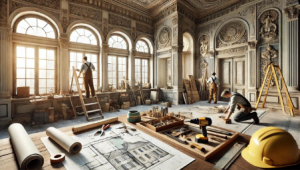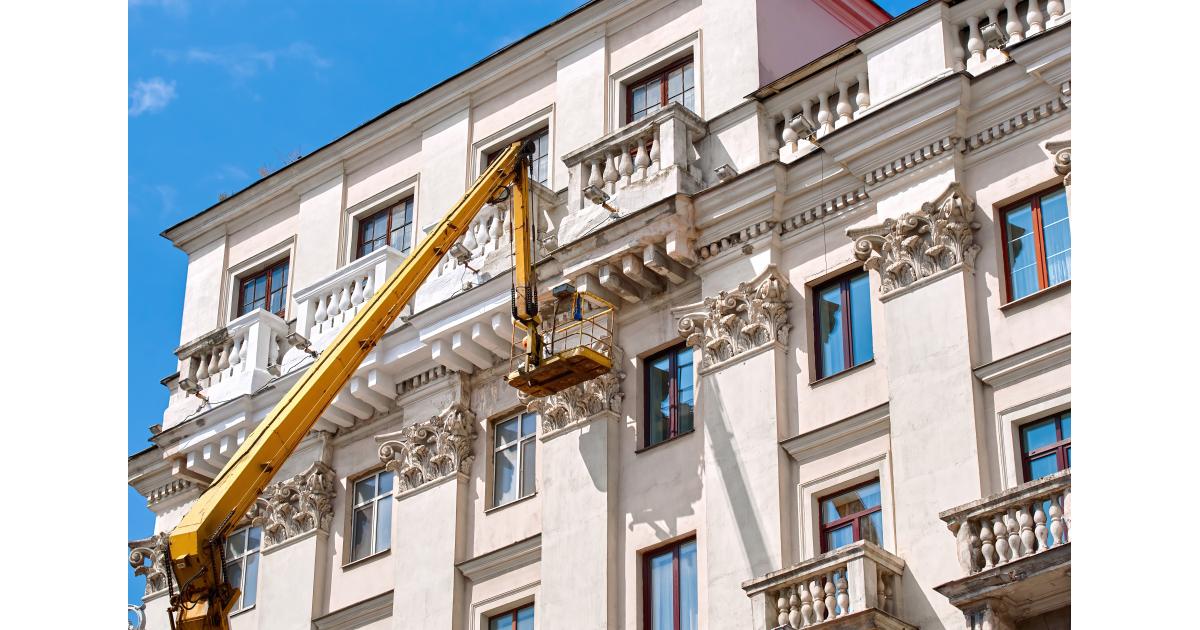Restoring a historic building is like stepping back in time, capturing the essence of an era and preserving it for the future. But achieving authenticity in a renovation project isn’t just about making it look old; it’s about maintaining the historical integrity of the building while also meeting today’s needs. Authenticity requires careful research, attention to detail, and the right materials.
In this article, we’ll walk through the essential steps to ensure authenticity in your historic renovation project, ensuring that the building’s unique character is preserved while blending with modern requirements.

Why Authenticity Matters in Historic Renovation
When working on a historic building, preserving authenticity is crucial for both its value and its connection to the past.
Preserving Historical Integrity
Each historic building tells a story through its architectural style, materials, and design. Authentic renovation keeps that story alive by retaining the elements that make the building unique. Whether it’s the windows, doors, or masonry, preserving these features helps maintain the original charm and historical accuracy.
Enhancing Property and Historical Value
Authenticity also has a financial benefit. Properly restored historic properties are often more valuable because they retain their historical integrity. For buildings in historic districts or with landmark status, preserving the original features can significantly increase their value. Additionally, authentic renovations often attract heritage tourism, which can boost the local economy.
Research and Documentation
Before picking up a hammer or paintbrush, the first step in ensuring authenticity is thorough research and documentation.
Conducting Thorough Historical Research
Start by diving into the building’s history. Look for old blueprints, photographs, or documents that give you insights into the building’s original design. Research the time period and architectural trends of the era when the building was constructed. This helps you stay true to the style and details that were originally intended.
Documenting the Building’s Current Condition
Take photos, detailed notes, and measurements of the building’s current state. This documentation will serve as a reference throughout the renovation process. Identify key elements that must be preserved, such as original flooring, moldings, or facade details. Prioritize these features in your renovation plan to make sure they stay intact.
Choosing the Right Materials
The materials you choose are key to maintaining authenticity in a historic renovation.
Sourcing Authentic Materials
Whenever possible, try to use original materials or reclaimed pieces that match the period of the building. This could include sourcing bricks, tiles, or wood from salvage yards or other historic buildings. Using original materials helps maintain the authentic look and feel of the structure.
Matching Historical Materials
If original materials aren’t available, it’s important to find modern equivalents that closely match the originals in appearance and texture. For example, if you’re restoring a historic brick building, use bricks that have a similar size and color to the originals. This helps the renovated parts blend seamlessly with the existing structure.
Working with Preservation Experts
One of the best ways to ensure authenticity is to collaborate with professionals who specialize in historic renovations.
Collaborating with Architects and Contractors Specializing in Historic Renovations
Hiring architects and contractors who have experience in historic renovations can make a huge difference. They understand the importance of preserving details and will follow best practices to maintain the building’s authenticity. These professionals are also familiar with local or national preservation guidelines and will ensure your project complies with them.
Engaging with Preservation Organizations
Preservation organizations can be valuable resources during a historic renovation. They often provide guidance, technical advice, and sometimes even financial support through grants and tax incentives. Whether it’s a national organization like the National Trust for Historic Preservation or a local historical society, working with these groups ensures your renovation stays true to the building’s heritage.
Balancing Authenticity with Modern Needs
While preserving history is important, modern needs can’t be ignored. The key is finding a balance between the two.
Incorporating Modern Amenities Without Sacrificing Authenticity
Modernizing a historic building doesn’t mean sacrificing its authenticity. For example, you can add energy-efficient insulation or HVAC systems without altering the appearance of the building. Modern plumbing and electrical systems can also be discreetly installed to bring the building up to current safety standards without impacting the original design.
Respecting Historical Integrity in Adaptive Reuse
Adaptive reuse projects, where old buildings are repurposed for new uses, are great examples of balancing the old with the new. Whether it’s converting an old mill into loft apartments or turning a historic church into a community center, the goal is to retain the building’s key features while adapting it for a modern purpose. This approach respects the past while keeping the building relevant for today’s use.
Challenges and Solutions in Ensuring Authenticity
Restoring a historic building comes with its fair share of challenges, but with the right approach, these can be overcome.
Sourcing Difficult-to-Find Materials
One of the biggest challenges in authentic restoration is finding materials that match the originals. Reclaimed materials can be hard to come by, and modern equivalents may not always look exactly the same. In some cases, custom reproductions may be needed to replicate intricate designs or specific architectural elements.
Navigating Preservation Regulations
Local and federal preservation codes can be complex, and it’s important to understand the rules before starting a project. Working closely with local governments and preservation boards can help ensure your renovation meets all necessary requirements while achieving your goals for authenticity.
Conclusion
Restoring a historic building is a rewarding process that preserves the past while bringing it into the present. By conducting thorough research, sourcing authentic materials, and working with experienced professionals, you can ensure your renovation project remains true to the building’s original character.
At STUDIO@Westmoreland Farm, we specialize in historic renovations that respect the past while incorporating modern necessities. We take pride in preserving the authenticity of historic structures, ensuring they continue to tell their stories for years to come. Contact us today to learn how we can help with your next project!



